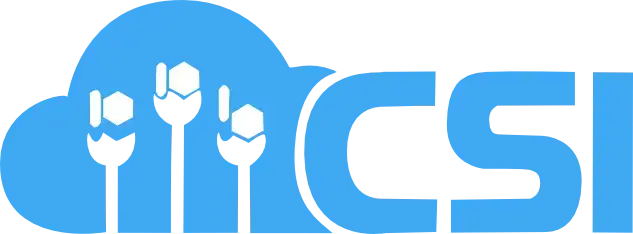Open Automation: Where things stand in 2024
Open Automation: Where Things Stand
While the tide has not exactly turned, there are signs that open automation standards and technologies are starting to fall in line. Evolving standards work, numerous industry partnerships and new vendor technologies are coalescing to raise manufacturers’ hopes for a more flexible environment that is simpler and less costly to manage than conventional automation platforms while also more appealing to a younger generation of software and process automation engineers
The contours of open automation have been floated for years, but a more finely tuned concept began to take shape from work initiated at ExxonMobil to create a next-generation, multi-vendor automation architecture that would free industrial companies from the interoperability constraints associated with closed, proprietary systems. Those traditional automation platforms often require companies to invest in expertise and resources to maintain multiple automation suppliers, and legacy systems stay operational far longer than they should because switching costs are high.
In conventional environments, any form of reuse is off the table, which means companies are constantly rewriting software applications and process control functions for every project as well as when specific systems reach end of life. The inability to reuse or easily implement best-in-class products also detracts from companies’ ability to transform and modernize, including leveraging Industrial 4.0 technologies like cloud, artificial intelligence and data analytics.
The burden of this upgrade cycle became too much for Exxon, and the groundwork laid at the oil giant was made public in 2016 and became the foundation for standards activity underway by the Open Process Automation Forum (OPAF), a subgroup with The Open Group global consortium. In addition to OPAF’s evolving O-PAS Standard, now at version 2.1, there are other developments percolating at non-profit groups as well as individual vendor companies to create an ecosystem of portable, interoperable “plug and produce” industrial automation standards and technologies. The goal is to lower the cost of control system upgrades and total cost of ownership, to design security into systems at scale, and to remove any barriers to integrating new technologies that will be the catalyst for next- generation digital advantage
“End users want more freedom—they want to be able to choose from best-in-class offerings and move from vendor A to vendor B if that company has a better solution,” says Aneil Ali, forum director of OPAF. “They don’t want to be limited to only what vendor A has to offer.”
2024 seems poised for efforts that could spring talk about open automation standards into genuine product-related action. “So far, there’s been a lot of paper writing with the [O-PAS] standard at well over 1,000 pages,” Ali says. “But you can’t make [product] with 1,000 pieces of paper so where we are now, and the theme of 2024, is certification. It’s all about productizing the standard and operationalizing the certification program so we can see in- market products that support the standard.”
O-PAS on the rise
O-PAS, positioned as a “standard of standards,” is being developed to be inclusive of brownfield assets, which means any hardware or software standards that exist today that have relevance to the mission are being integrated within the body’s work, Ali says. To date, more than 125 organizations and standards initiatives have played a role in the development of O-PAS, which includes use of the DMTF Redfish API for out-of-band system management, PLCopen and IEC 61131-3 for harmonizing programming standards for PLCs, and OPC UA for use as the standard connectivity component.
While there are currently no available automation or controls products that are O-PAS certified, Ali expects that to change as testing and certification efforts are developed and operationalized over the coming year. He also expects existing standards organization partners to help pick up the pace as it relates to certifying O-PAS-supported products that align with their particular specialty domains. “We are leveraging the existing certification labs for standards that are referenced in the O-PAS standard,” Ali explains.
Don Bartusiak, former chief engineer for process control at ExxonMobil who laid the groundwork for open automation standards and solutions work, is continuing to champion multivendor automation architectures and believes the industry is finally on the cusp of change. Bartusiak is helping to evolve the O-PAS standard through his work at Collaborative Systems Integration, which offers consulting services for the design and integration of O-PAS systems as well as through the Coalition of Open Process Automation (COPA), a partnership program formed by CSI and CPLANE.AI to bring together IT and OT technology vendors to create commercial control systems based on O-PAS.
In the early pilots demonstrated by CPLANE.ai and ExxonMobil, standards including O-PAS, OPC-UA, DMTF Redfish, and IEC 61499 were leveraged to demonstrate automation of provisioning, initiation and lifecycle management of an open architecture, multi-vendor control system. BASF has a demonstrator version of an O-PAS system that includes a water tank, heaters and coolers, and Georgia Pacific has a portable demonstrator as well. “We’ve demonstrated a novel cybersecurity solution that can’t be done with current control systems and exhibited a scenario where system upgrades are done on a component basis rather than a whole system basis,” Bartusiak explained. “Each one of these demonstrations and testbeds showcase what can be accomplished with systems built in conformance to O- PAS.”
Taking a software-centric view
Outside of the O-PAS standard and test beds, pieces of the open automation vision are materializing in new vendor offerings as well as through other collaborative efforts. One of the more notable is UniversalAutomation.org, an independent, non-for-profit association, which is managing the implementation of a shared source runtime execution engine based on the IEC 61499 standard. The organization is positioned not as an alternative to O-PAS or the work being done at OPAF, but rather as a complementary effort designed to decouple automation hardware from software. The intention is to enable an ecosystem of portable, interoperable, “plug and produce” technologies that will empower customers to select the best product for the job regardless of vendor while also making it easy to couple real-time plant floor automation systems with enterprise applications managed by IT.
Currently, there are nearly 70 member organizations participating in UniversalAutomation and about a dozen supported offerings based on the shared automation runtime, including ruggedized PCs, IoT controllers, industrial edge gateways and PLCs. ExxonMobil has been using the UAO runtime execution engine in an OPAF test bed since 2018 and Cargill is using the solution to decouple its application library from vendor platforms, Boucaud noted.
Schneider Electric is one of the founding members of UniversalAutomation.org and one of the first to support its vision through EcoStruxure Automation Expert (EAE), an IEC 61499 software-centric industrial automation system used to design, deploy and manage industrial control systems. Applications written with EAE can execute directly in intelligent devices, and the same scalable run-time platform can be executed on everything from a Raspberry Pi device to a blade server.
Siemens is also working to strike the right balance between its traditional proprietary system approach and new technologies and standards that deliver on the vision of open automation. Siemens is a member of OPAF, markets a variety of products that are certified compliant with the OPC UA standard for streamlined machine-to-machine communication, and has released Simatic AX, which introduces software development mechanisms to the world of industrial automation. Among the capabilities are a native Git integration for version control, remote connectivity to Simatic PLCs, and an integrated development environment based on Visual Studio code.
“We’re bringing IT workflows to engineering OT devices like PLCs,” said Luis Narvaez, product manager for controllers for factory automation at Siemens. “It doesn’t mean traditional engineering software is going away—we’re just introducing different paths for workers who are more comfortable with IT workflows, interoperability and convergence.”
“Open automation requirements need to be in the bid specs,” he added. “If we continue to ask for what we’ve gotten for the past 30 to 40 years, we’ll continue to get the same thing. We have to ask for something different.
About the Author
Beth Stackpole, contributing writer | Contributing Editor, Automation World


